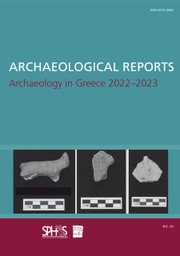Article contents
Early Cycladic fortified settlements: aspects of cultural continuity and change in the Cyclades during the third millennium BC
Published online by Cambridge University Press: 13 February 2018
Extract
Early Cycladic culture (third millennium BC) has been a focus of scientific interest since the late 19th century. Our knowledge of Early Cycladic civilization is based primarily on evidence gathered from a substantial number of cemeteries that have been discovered in various parts of the Cyclades. In comparison, excavations of Early Cycladic settlements are few in number. Thus, habitation comprises an essential yet understudied field of research.
Despite these limitations, fieldwork as well as material and analytical studies conducted over the period 2000–2017 have contributed to a far better understanding of Early Cycladic habitation patterns. Excavations and/or publications of important sites, such as Chalandriani and Kastri on Syros, Skarkos on Ios, Dhaskalio and Kavos on Keros, Markiani on Amorgos and Korfari ton Amygdalion (Panormos) on Naxos, have revealed significant new evidence regarding the development and character of Early Cycladic civilization.
- Type
- Archaeology in Greece 2016–2017
- Information
- Copyright
- Copyright © Authors, the Society for the Promotion of Hellenic Studies and the British School at Athens 2017
- 1
- Cited by




